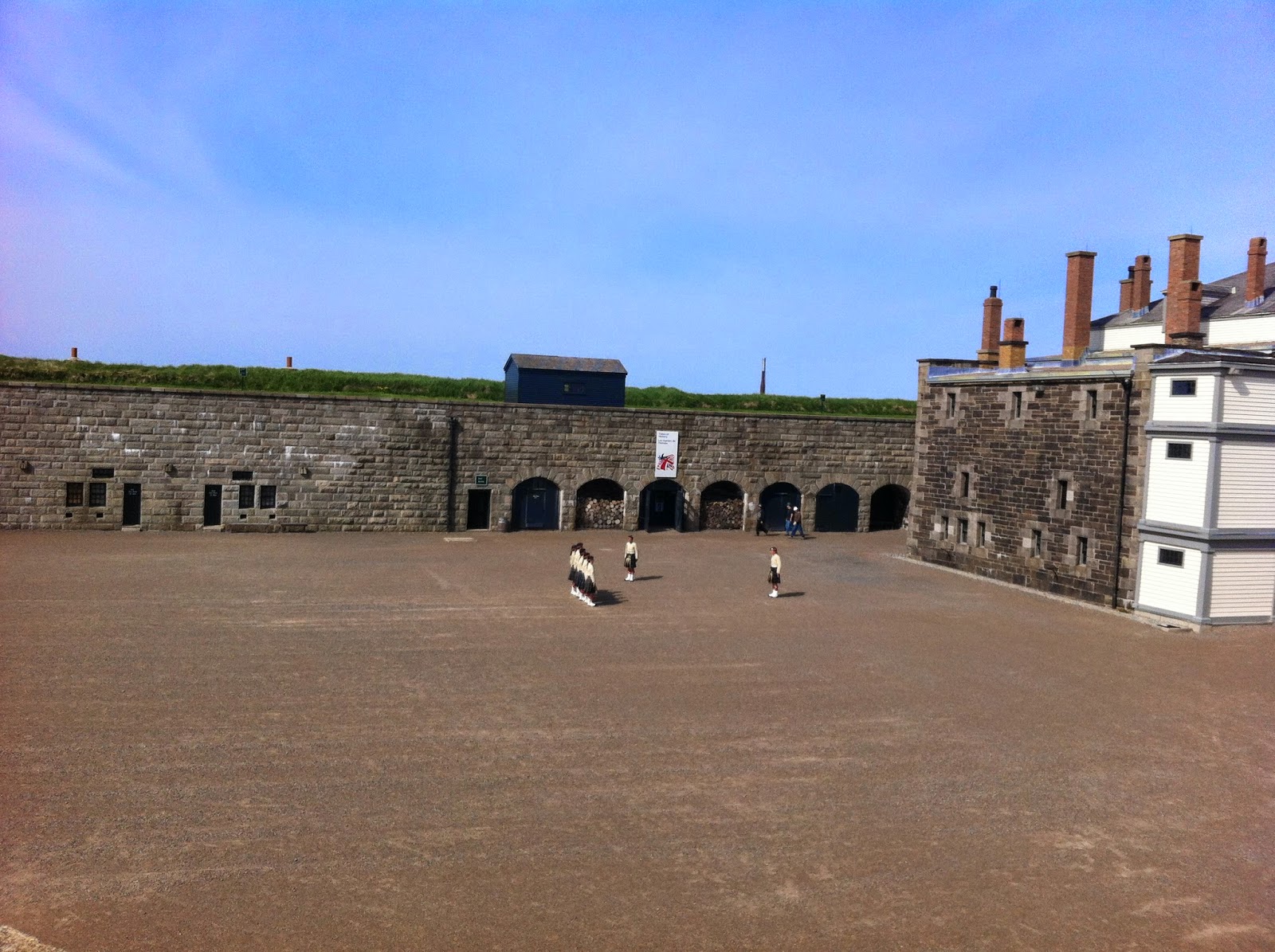It's Saturday and a day of rest for us. We're back at the RV in Muncton after three days in Nova Scotia. Laundry and relaxing are the day's agenda.
On Friday, we drove into Halifax in the morning and visited the Halifax Citadel there, a very interesting military national historic site on a hill above the city and bay. The first fort was build on this hill in 1749 and the fourth and current fortress was built as a result of the War of 1812. The French and the British were not the best of friends when it came to claiming territories in this end of Canada. The strategic location played a part in the British Navy even until 1906, and then with the Canadian military through World Wars I and II. Very interesting. And the fortress certainly looks impenetrable. Some pictures to follow:
 |
| View of the city as we walked up the hill to the gate of the Citadel |
 |
| Guard at the gate |
 |
| Bob at the door |
 |
Practicing shooting of the cannon. The masts are part of the fort and were used
for communication with ships in the bay and the people of Halifax |
 |
| These kilted lads were practicing on the grounds for some of their live demonstrations |
 |
| Another view of them with a general sense of the inside of the fort |
 |
| Linda with cannon - notice track so they could aim in several directions through the grassy rampart |
 |
| One view of the city through an opening in the rampart |
Walking back down the hill, I got a good shot of the Old Town Clock tower, built in 1800. Prince Edward, Duke of Kent and commander-in-chief of all military forces in British North America, had the four sided clock built to resolve the tardiness of the local garrison.
 |
| Old Town Clock |
Then we drove down to the water front and walked around on a beautiful day and enjoyed the wharf.
 |
| Linda on the boardwalk with the Tall Ship Silva in the background, used for local sails |
The Acadia was "on display" and described as the largest artifact in the Atlantic Maritime Museum that is there on the water front. She's a museum ship, "one of the best preserved Edwardian ocean steamships in the world." She specialized in the charting of the coastline of Eastern Canada from 1913-1969.
This is a picture of the Old Town Clock up on the grounds of the Citadel looking up from the water front.
 |
| Old Town Clock up the hill |
After Halifax we drove to Peggy's Cove. It's a barren rock (granite) community on the edge of St. Margaret's Bay and the Atlantic Ocean. We had lunch there and Bob had his first lobster.
 |
| Peggy's Cove Light House |
 |
| Looking back at the village. Our place mats said population of 35, year round |
 |
| Some carvings by an art studio |
 |
| Bob gets instructions from the waitress for eating his crab |
 |
| That's hard work |
Perhaps you can sense that we had a very busy day. We drove back to Muncton to rest up for our last day in the Maritimes on Prince Edward's Island.


















No comments:
Post a Comment